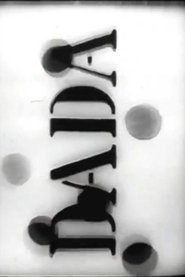Hans Richter
Richter's first contacts with modern art were in 1912 through the "Blaue Reiter" and in 1913 through the "Erster Deutscher Herbstsalon" gallery "Der Strum", in Berlin. In 1914 he was influenced by cubism. He contributed to the periodical Die Aktion in Berlin. His first exhibition was in Munich in 1916, and Die Aktion published as a special edition about him. In the same year he was wounded and discharged from the army and went to Zürich and joined the Dada movement. Richter believed that the artist's duty was to be actively political, opposing war and supporting the revolution. His first abstract works were made in 1917. In 1918, he befriended Viking Eggeling, and the two experimented together with film. Richter was co-founder, in 1919, of the Association of Revolutionary Artists at Zürich. In the same year he created his first Prélude (an orchestration of a theme developed in eleven drawings). In 1920 he was a member of the November group in Berlin and contributed to the Dutch periodical De Stijl. Throughout his career, he claimed that his 1921 film, Rhythmus 21, was the first abstract film ever created. This claim is not true: he was preceded by the Italian Futurist Bruno Corra and Arnaldo Ginna between 1911 and 1912 (as they report in the Futurist Manifesto of Cinema), as well as by fellow German artist Walter Ruttmann who produced Lichtspiel Opus 1 in 1920. Nevertheless, Richter's film Rhythmus 21 is considered an important early abstract film. Richter moved from Switzerland to the United States in 1940 and became an American citizen. He taught in the Institute of Film Techniques at the City College of New York. While living in New York City, Richter directed two feature films, Dreams That Money Can Buy (1947) and 8 x 8: A Chess Sonata in 8 Movements (1957) in collaboration with Max Ernst, Jean Cocteau, Paul Bowles, Fernand Léger, Alexander Calder, Marcel Duchamp, and others, which was partially filmed on the lawn of his summer house in Southbury, Connecticut. In 1957, he finished a film entitled Dadascope with original poems and prose spoken by their creators. After 1958, Richter spent parts of the year in Ascona and Connecticut and returned to painting. In 1963, he directed the short film "From the Circus to the Moon" on the American artist Alexander Calder. Richter died in Minusio, Switzerland in 1976.

Diaries, Notes, and Sketches
as SelfAn epic portrait of the New York avant-garde art scene of the 60s.
Movie pageGhosts Before Breakfast
as uncreditedHans Richter, noted for his abstract shorts, has everyday objects rebelling against their daily...
Movie pageHe Stands in a Desert Counting the Seconds of His Life
as Self (archive footage)A film collage tracing the story of the lives, loves, and deaths within the artistic community...
Movie pageThe Challenge... A Tribute to Modern Art
as SelfThe Challenge... A Tribute to Modern Art is a 1974 American documentary film directed by Herbert...
Movie pageIntermediate Landing in Paris
as uncreditedMichèle, an employee at the airport, is in love with American pilot Eddie Miller who regularly...
Movie pageFree Radicals: A History of Experimental Film
as Himself (archive footage)Experimental filmmaker Pip Chodorov traces the course of experimental film in America, taking...
Movie pageDada
as uncredited1967 film directed by Greta Deseson about the Dada art movement. Featuring Marcel Duchamp, Man...
Movie pageGermany Dada
as HimselfThis documentary concerns the contributions of German artists to the Dadaist movement. Created...
Movie page






